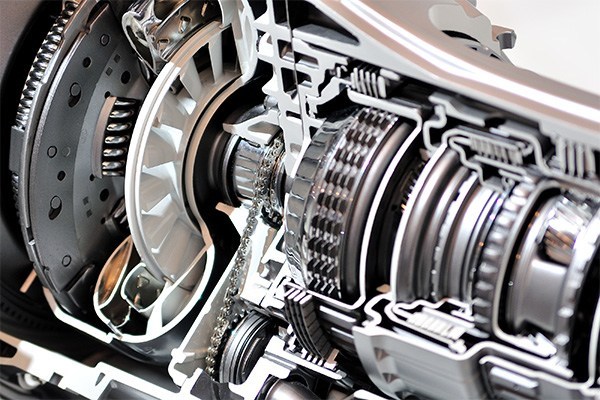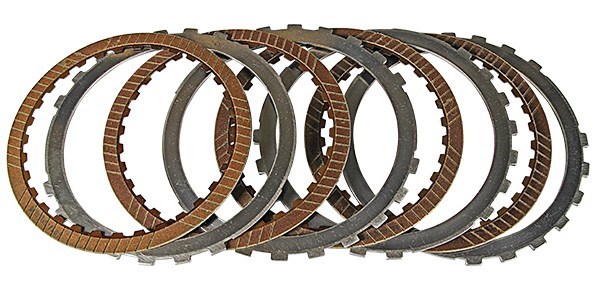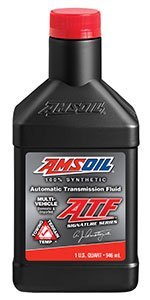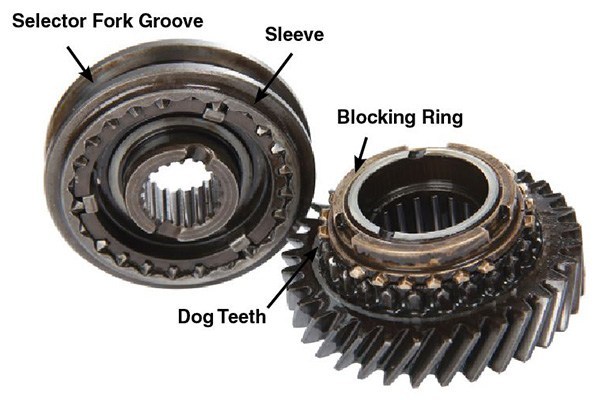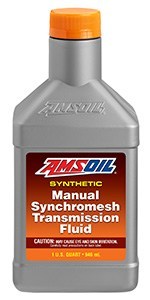Differences Betwixt Automatic & Manual Transmission Fluid
Back in 2006, original equipment manufacturers (OEMs) offered buyers the choice between an automatic and a manual transmission in 47 percent of new cars. Fast forward to 2018, when only 2 percent of vehicles sold had a manual transmission, according to edmunds.com.
Even with manual transmissions on the endangered species list, questions about automatic vs. manual transmission fluid still arise. Whether you opt for a stick or a slush box, you want to use the correct transmission fluid to maximize its performance and life.
Four responsibilities of a good automatic transmission fluid
The differences between automatic and manual transmission fluid lie in what each fluid must do. You don’t have to be an engineer to know that an automatic transmission is far more complex than a manual. Fittingly, so is the fluid it requires to function properly.
Automatic transmission fluid must perform several functions, including…
1. Act as a hydraulic fluid
Automatic transmissions use pressurized fluid to change gears. In essence, automatic transmission fluid is hydraulic fluid.
When your vehicle’s computer decides its time to shift gears, it sends an electric signal to the appropriate transmission solenoid. The solenoid directs fluid through a complex series of passages in the valve body to engage the correct gear. The fluid squeezes a series of plates together inside a clutch pack to connect the engine to the transmission output shaft and route power to the wheels.
In a properly functioning transmission, this all happens instantly and goes largely unnoticed.
However, fluid that’s too thick (it’s viscosity is too high) can fail to flow quickly for crisp, confident shifts. That’s one reason automatic transmission fluid has a lower viscosity than manual transmission fluid.
Fluid that has accumulated foam can also fail in its role as a hydraulic fluid. The foam bubbles collapse under pressure, causing elongated or inconsistent shifts (not to mention gear wear). For that reason, automatic transmission fluid must contain foam inhibitors.
2. Deliver the correct frictional requirements
As noted, pressurized automatic transmission fluid squeezes the clutch packs together to engage the correct gears. These clutch packs are comprised of bare metal plates and plates coated in friction material. Engagement and disengagement must occur seamlessly to provide the driver with the best driving experience.
The fluid’s frictional properties determine whether this complicated choreography of moving metal and fluid creates crisp shifts or has you scheduling a time to change transmission fluid.
As such, automatic transmission fluid is formulated to provide precise frictional properties not required of manual transmission fluid.
Shop AMSOIL Synthetic Automatic Transmission Fluid
3. Protect gears from wear
Automatic transmissions contain an array of sun, planet and ring gears that require lubrication to protect against wear. The fluid must form a durable fluid film on metal surfaces to prevent metal-to-metal contact and wear.
4. Fight heat
Heat is automatic transmission fluid’s number-one enemy. It chemically breaks down the fluid (known as oxidation). Fluid that has broken down leads to sludge and varnish, which can clog narrow oil passages and contribute to clutch glazing. Soon, your vehicle can begin to shift hard, jerk or hesitate.
Automatic transmissions typically run hotter than manuals, meaning the fluid must provide enhanced protection against heat. That’s one reason some vehicles have automatic transmission fluid coolers.
Shop AMSOIL Synthetic Automatic Transmission Fluid
Three responsibilities of a good manual transmission fluid
Just because they’re less complex doesn’t mean manual transmission lubrication requirements are simple. A good manual transmission fluid must serve several roles, including…
1. Enable smooth shifts
Nothing connects vehicle and driver like a smooth-shifting manual gearbox. Enthusiasts won’t tolerate a transmission fluid that interferes with that link.
Here, we have some cross-over between automatic and manual transmission fluid. But they go about enabling smooth shifts differently based on different component architecture.
Most manual transmissions are equipped with synchronizers. As the name suggests, the synchro equalizes its speed with that of the gear being engaged, allowing a smooth shift. Without it, the gears spinning at different speeds would clash as they try to mate.
The synchronizer unit is comprised of two main components: the sleeve and the blocker or synchronizer ring. When the driver selects, for example, first gear, the sleeve moves to the first gear and locks onto the gear engagement teeth, also known as dogs. Depressing the clutch pedal and selecting second gear results in the sleeve moving the other way and selecting second gear in the same fashion.
Before the sleeve can lock onto the gear, the rotational speed of each must first be synchronized. The friction between the blocker ring and a cone on the face of the gear equalizes their speed, allowing gears to mate without clashing. The entire process happens quickly and goes unnoticed in correctly operating transmissions.
Lubricant viscosity plays a vital role in shift feel.
Viscosity that is too high could prevent shifting until the transmission warms up or result in abnormally high temperatures during operation. Viscosity that is too low could cause the synchronizer and dog gear to engage too quickly, resulting in grinding or hard shifts and abnormal transmission wear.
2. Fight wear
Again, manual transmission fluid must protect against wear, just like an automatic transmission fluid. Manual transmission fluid, as noted earlier, tends to be a higher viscosity than automatic transmission fluid. This helps the fluid develop a thick, durable protective film.
Shop AMSOIL Synthetic Manual Transmission Fluid
3. Protect brass synchronizers
Synchros are usually made of brass, which is softer than other metals. Certain lubricant additives aren’t compatible with brass and can damage the synchros.
The properly formulated manual transmission fluid for your vehicle will protect synchros to ensure they last as designed and promote smooth shifts.
As you may have figured out, automatic transmission fluid can, in some cases, work fine in manual transmissions. Which raises another question…
Will automatic transmission fluid work in a manual transmission?
Yes – provided the original equipment manufacturer recommends it. It’s important to check your owner’s manual to make sure before dumping ATF in your manual transmission.
In fact, some manuals may call for a gear lube or even a motor oil in older units.
I should also point out that continuously variable transmissions (CVT), popping up on more vehicles today due their increased efficiency, take their own fluid. And so do dual-clutch transmissions (DCT), which you’ll find on many sports cars.
Whichever you prefer, AMSOIL formulates a transmission fluid to help maximize transmission performance and life.


